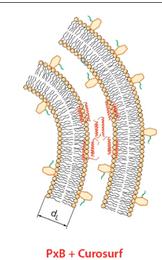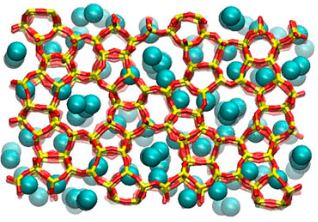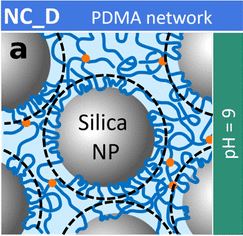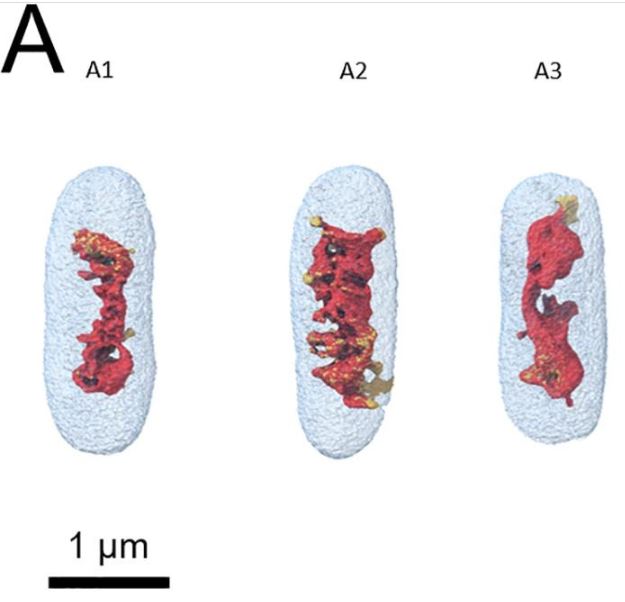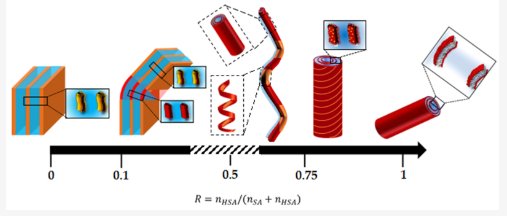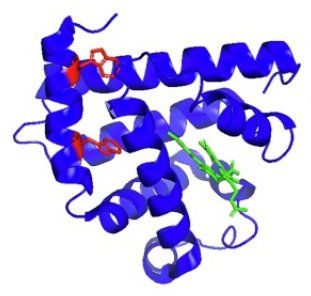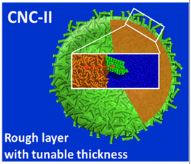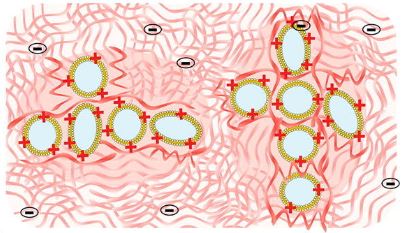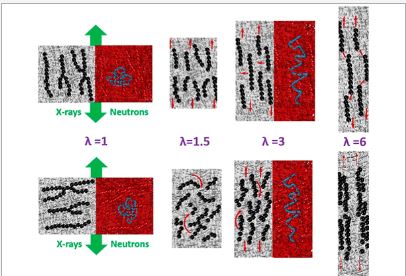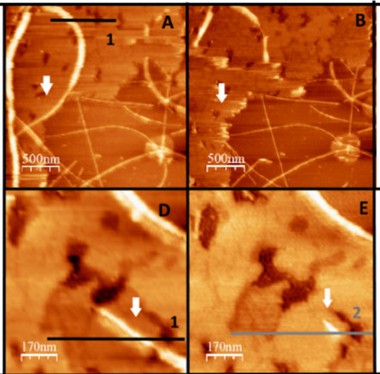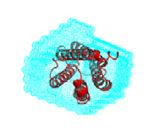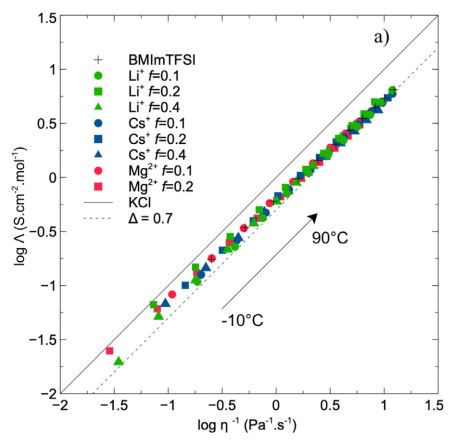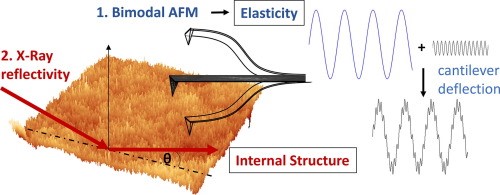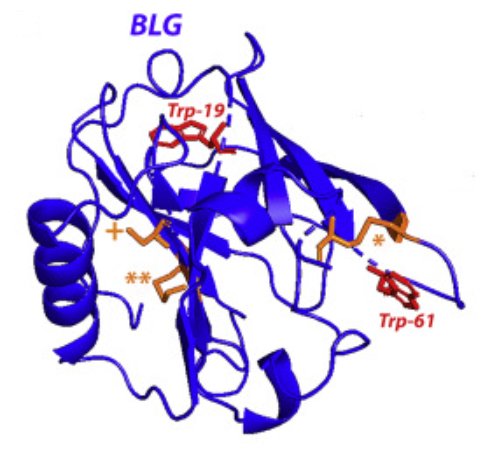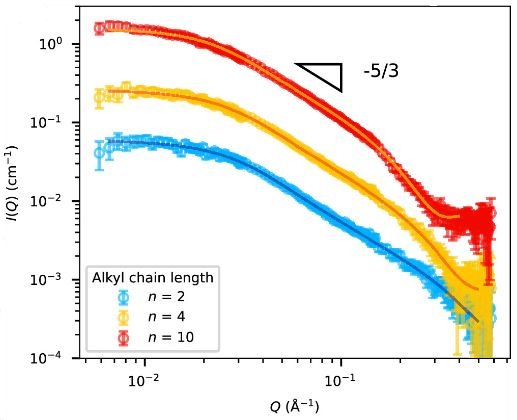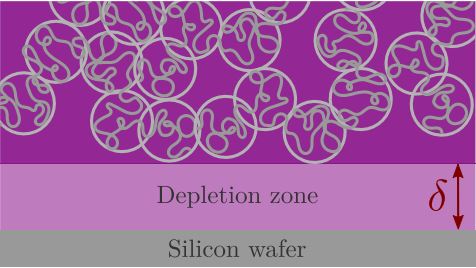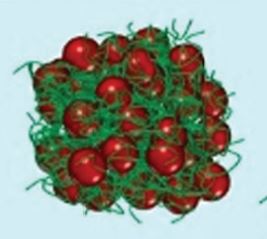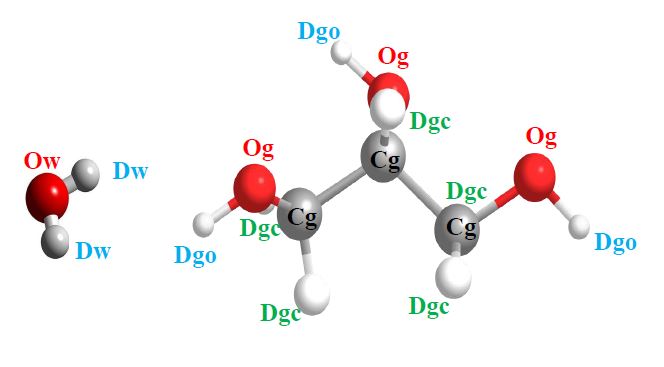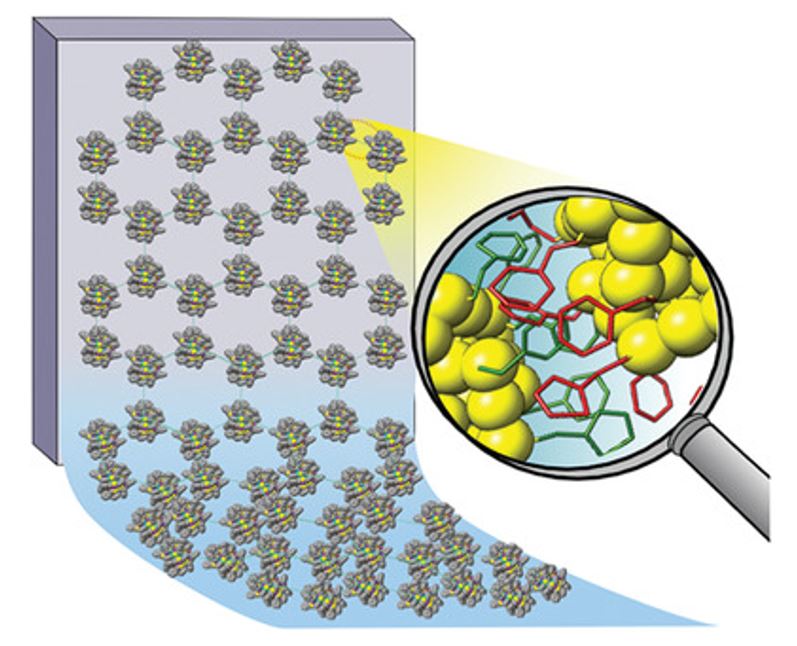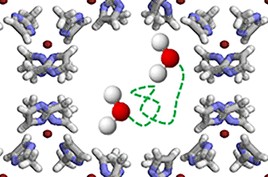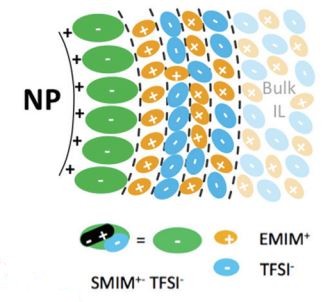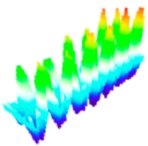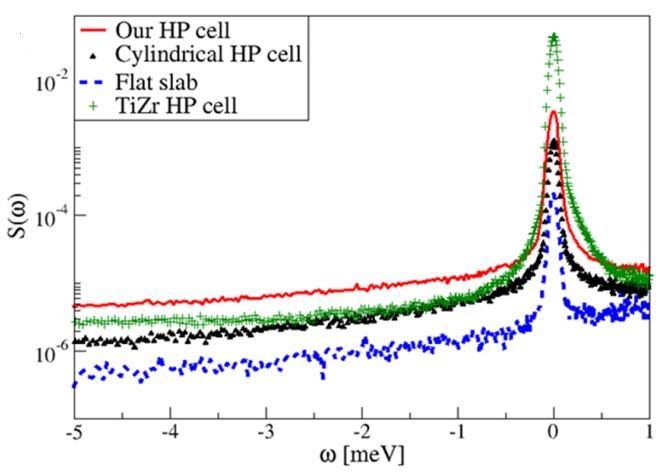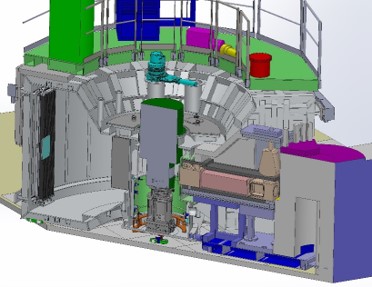Jun 13, 2024
Glaive, AS ; Coeur, C ; Guigner, JM ; Amiel, C ; Volet, G
The amphiphilic heterograft copolymers bearing biocompatible/biodegradable grafts [poly-(2-methyl-2-oxazoline-co-2-pentyl-2-oxazoline)-g-poly-(D-L-lactic acid)/poly-(2-ethyl-2-oxazoline)] were synthesized successfully by the combination of cationic ring-opening polymerization and click chemistry via the <"grafting to"> approach.
May 01, 2024
Salah Bouazizi, Salah Nasr & Marie-Claire Bellissent-Funel
MD simulation and analysis of the pair correlation functions, self-diffusion coefficients and orientational correlation times in aqueous KCl solutions at different temperatures and concentrations,
S. Bouazizi, S. Nasr and M.-C. Bellissent-Funel, J Solution Chem (2024) https://doi.org/10.
Apr 07, 2024
Nina Královič-Kanjaková, Ali Asi Shirazi, Lukáš Hubčík, Mária Klacsová, Atoosa Keshavarzi, Juan Carlos Martínez, Sophie Combet, José Teixeira, and Daniela Uhríková
The use of an exogenous pulmonary surfactant (EPS) to deliver other relevant drugs to the lungs is a promising strategy for combined therapy.
Feb 16, 2024
On De Gennes narrowing of fluids confined at the molecular scale in nanoporous materials
Wanda Kellouai, Jean-Louis Barrat, Patrick Judeinstein, Marie Plazanet, Benoit Coasne, J. Chem. Phys. 160, 024113 (2024).
Beyond well-documented confinement and surface effects arising from the large internal surface and severely confining porosity of nanoporous hosts, the transport of nanoconfined fluids remains puzzling in many aspects. With striking examples such as memory, i.e.
Dec 01, 2023
Anne-Charlotte Le Gulluche, Guylaine Ducouret, Ludovic Olanier, Annie Brûlet, Olivier Sanseau, Paul Sotta, and Alba Marcellan
Model hybrid hydrogels reinforced by silica nanoparticles were designed by polymerizing and cross-linking the gels in situ. The polymer–particle interactions were tuned by using either poly(dimethylacrylamide) (PDMA), which adsorbs on silica, or poly(acrylamide) (PAAm), which does not.
Oct 13, 2023
Antoine Cossa, Sylvain Trépout, Frank Wien, Johannes Groen, Etienne Le Brun, Florian Turbant, Laetitia Besse, Eva Pereiro, Véronique Arluison
The bacterial chromosomic DNA is packed within a membrane-less structure, the nucleoid, due to the association of DNA with proteins called Nucleoid Associated Proteins (NAPs). Among these NAPs, Hfq is one of the most intriguing as it plays both direct and indirect roles on DNA structure.
Aug 25, 2023
Maëva Almeida, Daniel Dudzinski, Catherine Amiel, Jean-Michel Guigner,Sylvain Prévost, Clémence Le Coeur and Fabrice Cousin
Here, we describe the behavior of mixtures of stearic acid (SA) and its hydroxylated counterpart 12-hydroxystearic acid (12-HSA) in aqueous mixtures at room temperature as a function of the 12-HSA/SA mole ratio R.
Jul 06, 2023
Simeon Minic, Burkhard Annighöfer, Milos Milcic, François Maignen, Annie Brûlet, Sophie Combet
Apomyoglobin (apoMb), a model protein in biochemistry, exhibits a strong propensity to bind various ligands, which makes it a good candidate as a carrier of bioactive hydrophobic drugs. The stability of its hydrophobic pocket determines its potential as a carrier of bioactive compounds.
Jun 13, 2023
Somia Haouache, Yu Chen, Clara Jimenez-Saelices, Fabrice Cousin, Pan Chen, Yoshiharu Nishiyama, François Jerome, and Isabelle Capron
Nanocelluloses can be used to stabilize oil–water surfaces, forming so-called Pickering emulsions. In this work, we compare the organization of native and mercerized cellulose nanocrystals (CNC-I and CNC-II) adsorbed on the surface of hexadecane droplets dispersed in water at different CNC concentrations.
May 02, 2023
Céline JAUDOIN, Isabelle GRILLO, Fabrice COUSIN, Maria GEHRKE, Malika OULDALI, Ana-Andreea ARTENI, Luc PICTON, Christophe RIHOUEY, Fanny SIMELIERE, Amélie BOCHOT, Florence AGNELY
Mixtures of hyaluronic acid (HA) with liposomes lead to hybrid colloid–polymer systems with a great interest in drug delivery. However, little is known about their microstructure.
Apr 08, 2023
Anne-Sophie Robbes, Jacques Jestin, Florian Meneau, Florent Dalmas, François Boué, and Fabrice Cousin,
Macromolecules 2022, 55, 15, 6876–6889.
Mar 14, 2023
Michal Swierczewski, Fabrice Cousin, Ewa Banach, Arnulf Rosspeintner, Latevi Max Lawson Daku, Abolfazl Ziarati, Rania Kazan, Gunnar Jeschke, Raymond Azoulay, Lay-Theng Lee, Thomas Bürgi
A bidentate chiral dithiol (diBINAS) is utilised to bridge Au25 nanoclusters to form oligomers. Separation by size allows the isolation of fractions that are stable thanks to the bidentate nature of the linker.
Feb 19, 2023
Florian Turbant, Jehan Waeytens, Camille Campidelli, Marianne Bombled, Denis Martinez, Axelle Grélard, Birgit Habenstein, Vincent Raussens, Marisela Velez, Frank Wien, Véronique Arluison
Hfq is a pleiotropic regulator that mediates several aspects of bacterial RNA metabolism. The protein notably regulates translation efficiency and RNA decay in Gram-negative bacteria, usually via its interaction with small regulatory RNAs.
Jan 27, 2023
Sophie Combet, Françoise Bonneté, Stéphanie Finet, Alexandre Pozza, Christelle Saade, Anne Martel, Alexandros Koutsioubas, Jean-Jacques Lacapère, Biochimie (2022) in press.
The translocator protein (TSPO) is a ubiquitous transmembrane protein of great pharmacological interest thanks to its high affinity to many drug ligands.
Nov 28, 2022
H. P. Khanh Ngo, E. Planes, C. Iojoiu, P. Soudant, A.-L. Rollet, P. Judeinstein
The increasing need of portable electrical resources requires to develop post-Li batteries, in which redox reactions are then based on the different alkali or earth alkaline ions.
Nov 07, 2022
Michal Swierczewski, Alexis Chenneviere, Lay-Theng Lee, Plinio Maroni, Thomas Bürgi
Langmuir-Blodgett (LB) technique allows the deposition of gold nanoclusters (atomically precise nanoparticles below 2 nm in diameter) onto solid substrates with an unprecedented degree of control and high transfer ratios. Nanoclusters are expected to follow the crinkle folding mechanism, which promotes the formation of trilayers but kinetically disfavors the formation of the fourth layer.
Sep 02, 2022
Simeon Minić, Burkhard Annighöfer, Arnaud Hélary, Laïla Sago, David Cornu, Annie Brûlet, Sophie Combet
High pressure (HP) is a particularly powerful tool to study protein folding/unfolding, revealing subtle structural rearrangements. Bovine β-lactoglobulin (BLG), a protein of interest in food science, exhibits a strong propensity to bind various bioactive molecules.
Jul 22, 2022
Fabrizia Foglia, Quentin Berrod, Adam J. Clancy, Keenan Smith, Gérard Gebel, Victoria García Sakai, Markus Appel, Jean-Marc Zanotti, Madhusudan Tyagi, Najet Mahmoudi, Thomas S. Miller, John R. Varcoe, Arun Prakash Periasamy, Daniel J. L. Brett, Paul R. Shearing, Sandrine Lyonnard and Paul F.
Jul 01, 2022
Tiago Outerelo Corvo, Antoine Jourdain, Shona O’Brien, Frédéric Restagno, Eric Drockenmuller, and Alexis Chennevière
Poly(ionic liquid)s (PILs), similar to their ionic liquid (IL) analogues, present a nanostructure arising from local interactions.
Jun 02, 2022
Marion Grzelka, Iurii Antoniuk, Éric Drockenmuller, Alexis Chennevière, Liliane Léger, and Frédéric Restagno
The role of the polymer volume fraction, ϕ, on steady-state slippage and interfacial friction is investigated for semi-dilute polystyrene solutions in diethyl phthalate in contact with two solid surfaces. Significant slippage is evidenced for all samples, with slip lengths b obeying a power law dependence.
Apr 21, 2022
Sumit Mehan, Laure Herrmann, Jean-Paul Chapel, Jacques Jestin, Jean-Francois Berret and Fabrice Cousin
We investigate the formation/re-dissociation mechanisms of hybrid complexes made from negatively charged PAA2k coated g-Fe2O3 nanoparticles (NP) and positively charged polycations (PDADMAC) in aqueous solution in the regime of very high ionic strength (I).
Mar 23, 2022
Interplay of vitrification and ice formation in a cryoprotectant aqueous solution at low temperature
Christiane Alba-Simionesco , Patrick Judeinstein , Stéphane Longeville, Oriana Osta , Florence Porcher , Frédéric Caupin , and Gilles Tarjus
The proneness of water to crystallize is a major obstacle to understanding its putative exotic behavior in the supercooled state. It also represents a strong practical limitation to cryopreservation of biological systems.
Feb 22, 2022
J.C.Riedl, M.Sarkar, T.Fiuza, F.Cousin, J.Depeyrot, E.Dubois,G.Mériguet,R.Perzynski and V.Peyre
Some of the most promising fields of application of ionic liquid-based colloids imply elevated temperatures. Their careful design and analysis is therefore essential. We assume that tuning the structure of the nanoparticle-ionic liquid interface through its composition can ensure colloidal stability for a wide temperature range, from room temperature up to 200 °C.
https://doi.org/10.
Dec 15, 2021
Virginie Vergnat, Benoît Heinrich, Michel Rawiso, René Muller, Geneviève Pourroy and Patrick Masson
Embedding nanoparticles (NPs) with organic shells is a way to control their aggregation behavior. Using polymers allows reaching relatively high shell thicknesses but suffers from the difficulty of obtaining regular hybrid objects at gram scale.
Nov 02, 2021
Michal Swierczewski, Plinio Maroni, Alexis Chenneviere, Mohammad M. Dadras, Lay-Theng Lee, Thomas Bürgi
Nanoscale particles attract much attention due to their size-dependent optical, electrical and chemical properties. Of particular interest are ultrasmall metal nanoclusters which experience strong quantum confinement effect leading to profound changes in the atomic packing structure.
Oct 10, 2021
J. Wolanin, L. Michel, D. Tabacchioni, J. M. Zanotti, J. Peters, I. Imaz, B. Coasne, M. Plazanet, and C. Picard
With their strong confining porosity and versatile surface chemistry, zeolitic imidazolate frameworks—including the prototypical ZIF-8—display exceptional properties for various applications. In particular, the forced intrusion of water at high pressure (∼25 MPa) into ZIF-8 nanopores is of interest for energy storage.
Sep 18, 2021
T. Fiuza, M. Sarkar, J. C. Riedl, A. Cebers, F. Cousin, G. Demouchy, J. Depeyrot, E. Dubois, F. Gelebart, G. Meriguet, R. Perzynski and V. Peyre
Ferrofluids based on maghemite nanoparticles (NPs), typically 10 nm in diameter, are dispersed in an ionic liquid (1-ethyl 3-methylimidazolium bistriflimide – EMIM-TFSI). The average interparticle interaction is found to be repulsive by small angle scattering of X-rays and of neutrons, with a second virial coefficient A2 = 7.3.
Aug 27, 2021
Eni Kume and Laurence Noirez
In the conventional picture, the temperature of a liquid bath in the quiescent state is uniform down to thermal fluctuation length scales. Here we examine the impact of a low-frequency shear mechanical field (hertz) on the thermal equilibrium of polypropylene glycol and liquid water away from any phase transition confined between high-energy surfaces.
Apr 12, 2021
Julie Wolanin, Jérôme Giraud, Claude Payre, Marianne Benoit, Claire Antonelli, Damien Quemener, Iliass Tahiri, Matthieu Vandamme, Jean-Marc Zanotti, and Marie Plazanet, Review of Scientific Instruments 92 (2021) 024106
In comparison to condensed matter, soft matter is subject to several interplaying effects (surface heterogeneities and swelling effect) that influence transport at the nanoscale.
Apr 05, 2021
In the Léon Brillouin Laboratory (LLB), and for the community of neutron scattering, this month of March 2021 was marked by an important event: the first neutron beam of the SHARP* instrument, a new time-of-flight neutron spectrometer, at the European reactor of the Institut Laue Langevin (ILL) in Grenoble.











